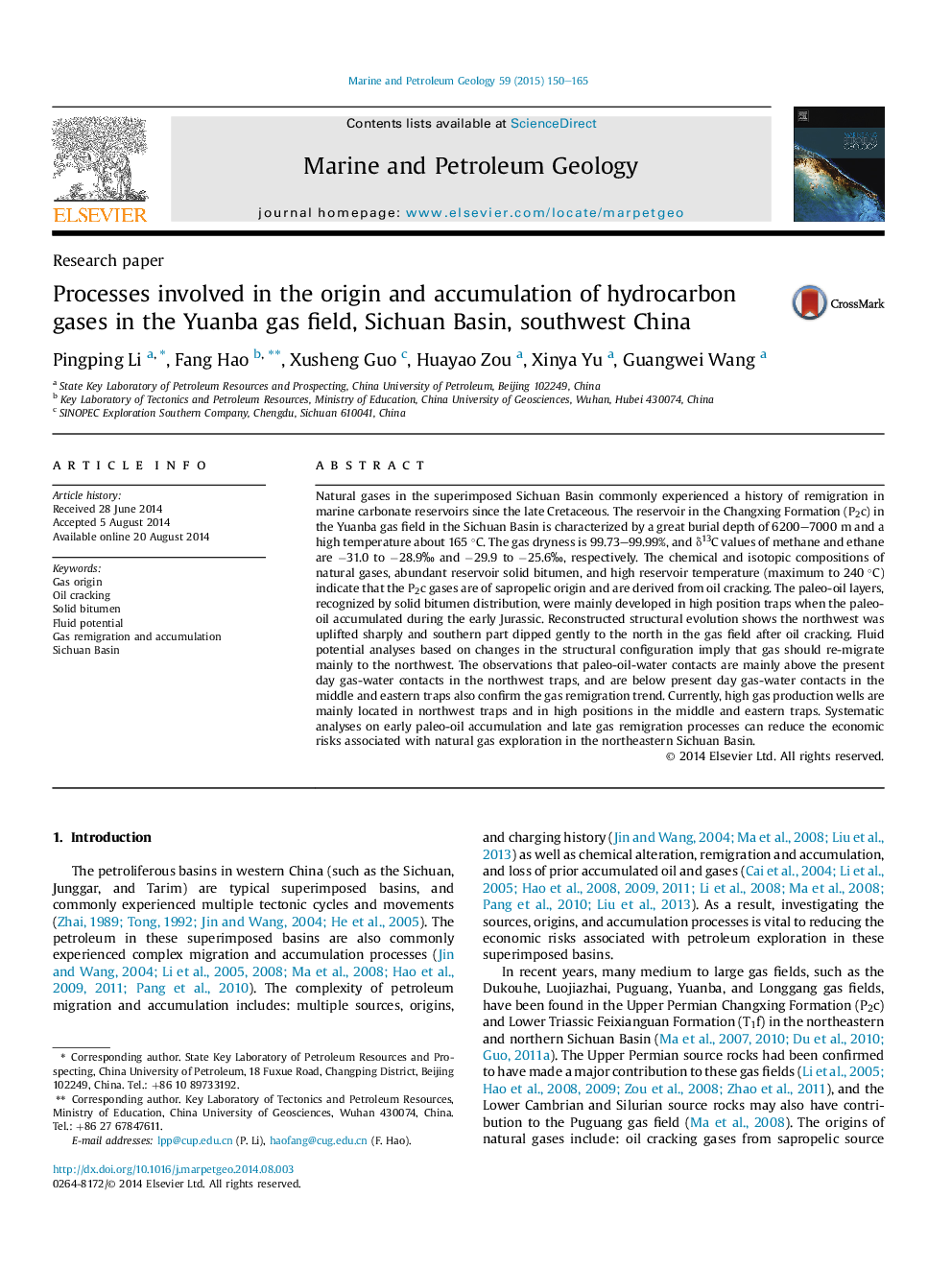| Article ID | Journal | Published Year | Pages | File Type |
|---|---|---|---|---|
| 4695613 | Marine and Petroleum Geology | 2015 | 16 Pages |
Natural gases in the superimposed Sichuan Basin commonly experienced a history of remigration in marine carbonate reservoirs since the late Cretaceous. The reservoir in the Changxing Formation (P2c) in the Yuanba gas field in the Sichuan Basin is characterized by a great burial depth of 6200–7000 m and a high temperature about 165 °C. The gas dryness is 99.73–99.99%, and δ13C values of methane and ethane are −31.0 to −28.9‰ and −29.9 to −25.6‰, respectively. The chemical and isotopic compositions of natural gases, abundant reservoir solid bitumen, and high reservoir temperature (maximum to 240 °C) indicate that the P2c gases are of sapropelic origin and are derived from oil cracking. The paleo-oil layers, recognized by solid bitumen distribution, were mainly developed in high position traps when the paleo-oil accumulated during the early Jurassic. Reconstructed structural evolution shows the northwest was uplifted sharply and southern part dipped gently to the north in the gas field after oil cracking. Fluid potential analyses based on changes in the structural configuration imply that gas should re-migrate mainly to the northwest. The observations that paleo-oil-water contacts are mainly above the present day gas-water contacts in the northwest traps, and are below present day gas-water contacts in the middle and eastern traps also confirm the gas remigration trend. Currently, high gas production wells are mainly located in northwest traps and in high positions in the middle and eastern traps. Systematic analyses on early paleo-oil accumulation and late gas remigration processes can reduce the economic risks associated with natural gas exploration in the northeastern Sichuan Basin.
